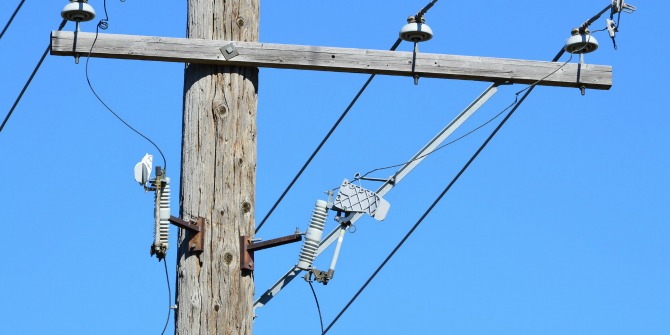The industrial revolution 200 years ago created what we call a linear economy. Ever since, we have been relying on such a model to achieve economic growth, and standards of living have improved significantly. But we pay a high price for it. In this type of “take, make and dispose” economy, companies operate with blinders on and industries function in silos. The way products are designed and manufactured, as well as the sourcing of materials, have no bearing on production. Consumers, attracted by a combination of low prices, fast-changing preferences, and convenience, often opt to replace many items such as electronics at an ever more rapid pace.
Over time, we have seen the linear economy create vast environmental and social consequences. Mass consumption, the burning of fossil fuels, the creation of urban conglomerates and global transportation have all caused staggering effects on the natural world.
Let’s look at some statistics just for Europe. In 2012, a single calendar year, only 40 percent of trash and rubbish was recycled. Cars were parked 92 percent of the time, and business offices were used only 35-40 percent during working hours. The continent creates the highest amount of e-waste in the world on a per capita basis. In Germany, household appliances are increasingly replaced after less than five years of usage. Throughout the continent, 31 percent of food goes to waste along the value chain. Among fruits and vegetables, 46 percent was lost from the edible mass, mostly thrown away by consumers. At the same time, agricultural production uses water and fertilizer and therefore they are also wasted. In short, we cannot go on living like this.
| A SNAPSHOT OF EUROPE IN 2012 | |
|---|---|
| Trash | 40% recycled |
| Cars | parked 92% of the time |
| Offices | used 35-40% of working hours. |
| Food | 31% wasted |
| Fruits and vegetables | 46% wasted |
This is why we need to – urgently – take on the circular economy. Instead of taking the path from “cradle to grave”, it promotes the possibility of going from “cradle to cradle”. This means that the circular economy is, by and large, recuperative in nature. It is therefore not so much about doing more with fewer resources. Rather, it is about doing more with what we have, through technology and business models based on reuse, repair, renewing, refurbishment, capacity sharing and dematerialisation.
The reward for the efforts could be substantial: it is estimated that by 2030 the disposable income of European households could be as much as 11 percent higher in a circular economy, relative to the current development path. That equals about seven percent more in GDP terms. Moreover, a study in the UK revealed that adopting a circular economy could bring 10,000 to 102,000 new net jobs, offsetting the 1 to 18 percent decline in skilled employment over the next decade.
The urgency to take on the circular economy has already prompted actions from both businesses and governments. The EU government has just completed a public consultation to gather information on how to best set up policies that work towards a circular development pathway. The European Commission would set forth to create policies of a circular economy revolution that is becoming one of the primary initiatives of its policy agenda. Simultaneously, corporate giants such as Philips and Rolls Royce, as well as new start-ups such as Mud Jeans and Uber, have found new ways not just to recycle better but also to reduce waste. More importantly, they have been broadening (i.e., reusing and sharing) and lengthening (i.e., turning “consumables” into “durables”) the consumption and usage of goods.
Pushing for a circular economy is one thing. Removing the obstacles that prevent the shift is another — and there are more than a few. One such obstacle is dealing with those who are losing out in the short term. Car-sharing scheme like Uber helps create less waste as it puts fewer (often unused) cars on the road. Yet, there has been a lot of resistance to this service: just witness taxi drivers taking the street en masse to protest against Uber.
Another hurdle is the so-called “rebound effect”. When prices drop as a result of better use of resources, consumption may go up, negating many of the benefits achieved. Last but not least, there is a need to influence businesses to switch from the existing practices to those that prevent, or at least postpone, perceived product obsolescence.
The way we have been achieving economic success has too long been like a 100–meter dash. It is time for us to adopt a circular economy, one that resembles more precision bike rides in the velodrome.
♣♣♣
Note: This article gives the views of the author, and not the position of LSE Business Review or the London School of Economics.
Featured image: Jeffrey Bary CC-BY-2.0
Mark Esposito is a professor of business and economics at Harvard University Extension School, and at Grenoble Graduate School of Management in France, and a senior associate at the University of Cambridge-CISL in the UK. Follow him on Twitter @Exp_Mark.
 Terence Tse is an associate professor of finance at ESCP Europe and the head of competitiveness studies at i7 Institute for Innovation and Competitiveness. Follow him on Twitter @terencecmtse.
Terence Tse is an associate professor of finance at ESCP Europe and the head of competitiveness studies at i7 Institute for Innovation and Competitiveness. Follow him on Twitter @terencecmtse.







1 Comments